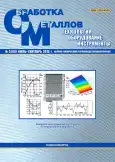Основные трудности, возникающие при сварке аустенитных сталей, связаны с необходимостью повышения стойкости металла шва и околошовной зоны против образования горячих трещин, которые обычно подразделяют на кристаллизационные и подсолидусные. Повышение сопротивляемости металла к образованию кристаллизационных трещин достигается путем подавления столбчатой кристаллизации и измельчения структуры за счет повышения скорости охлаждения, чистоты сплавов по примесям, использования легирования элементами-модификаторами или элементами, способствующими образованию высокотемпературных вторых максимально пластичных фаз (например δ-феррита). Эти пути сужают температурный интервал хрупкости и повышают запас пластичности. Для повышения сопротивляемости аустенитных сталей образованию подсолидусных горячих трещин при сварке рекомендуют: легирование сплавов элементами, способствующими созданию фрагментарной литой структуры, повышение чистоты основного металла по примесям внедрения, сокращение времени нахождения металла при температуре высокой диффузионной подвижности (увеличение скорости охлаждения металла сварных швов), ограничение деформаций за счет выбора рациональной конструкции соединений и др. Перечисленные выше направления реализуются при лазерной сварке, которая характеризуется высокими скоростями нагрева и охлаждения, малой длительностью пребывания металла в расплавленном состоянии, Это способствует уменьшению диффузионного взаимодействия и формированию мелко-дисперсной фрагментарной литой структуры материала шва. Интенсивное конвективное перемешивание расплава в сварочной ванне способствует удалению неметаллических включений. Особую роль могут играть добавки тугоплавких нанопорошков (НП) в формирующийся материал сварных швов. Специально подготовленные хорошо смачиваемые тугоплавкие нанопорошковые частицы при вводе их расплав формирует дисперсную систему, в которой ядром каждой частицы суспензии служит твердая фаза. В результате этого каждая наночастица становится потенциальной затравкой для зарождения новой фазы. Благодаря этому в расплаве в процессе его охлаждения формируется мелкодисперсная кристаллическая структура, вследствие чего повышаются механические характеристики затвердевшего сплава. В статье обсуждается проблема повышения прочности сварного шва на примере стали марки 12Х18Н10Т (AISI 321). Неразъемные сварные соединения выполнены при помощи лазерной сварки с применением нанопорошковых добавок. В ходе работы определены значения усталостной прочности сварных соединений, полученных с помощью СО2-лазера без добавок и с добавками нанопорошков TiN и Y2O3, плакированных титаном и железом. Исследована роль микроструктуры, размера зерна, характера распределения микротвердости в формировании поверхности разрушения при выбранных условиях испытаний. Установлено, что среднее значение временного сопротивления для сварного шва составило 690 МПа, что превышает его значение для самой стали (650 МПа). Даже присутствие микропор в материале сварных швов не снизило прочностные свойства по сравнению с основой. Рельеф изломов образцов соответствует вязкому разрушению. Добавки нанопорошков увеличили долговечность материала полученных соединений в 2,8 раза при значениях максимального напряжения цикла более 460 МПа. При этом зоны долома по механизму вязкого разрушения составляли 65 % от всей площади изломов образцов с нанопорошками и 78 % - без них. При меньших значениях максимальных напряжений цикла доля зоны долома составляла около 50 % площади изломов образцов.
 6-15
6-15


 16-22
16-22


 23-30
23-30


 31-41
31-41


 42-48
42-48


 49-57
49-57


 58-65
58-65


 66-74
66-74


 75-81
75-81


 82-88
82-88


 89-98
89-98


 99-106
99-106








